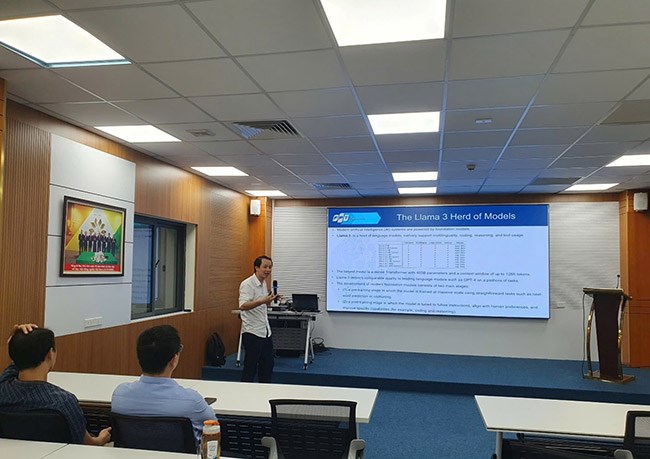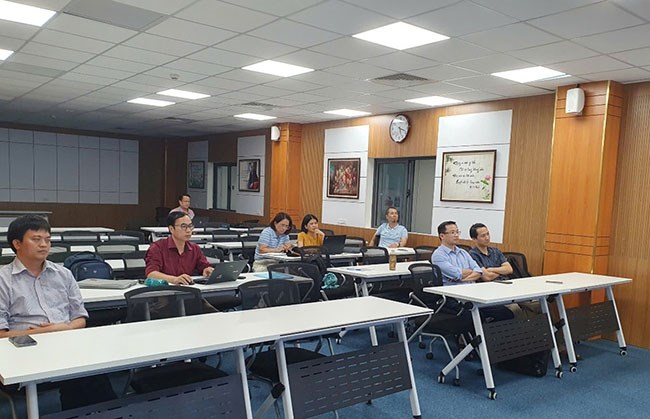At 2:00 p.m. on September 29, 2025, in Room P310 of the Center for Excellence in Research and Innovation, the Strong Research Group on Big Data and Digital Transformation organized an academic seminar that attracted significant interest from lecturers, researchers, and technology enthusiasts. The event focused on digital technology, big data, and the practical applications of Artificial Intelligence (AI).
Overview of Large Language Models
Large Language Models (LLMs) are artificial intelligence systems trained on vast amounts of textual data to understand, generate, and manipulate natural language with high precision and flexibility. They are considered one of the most groundbreaking advances in the fields of Natural Language Processing (NLP) and Artificial Intelligence (AI) over the past decade.
These models are built upon the transformer architecture (Vaswani et al., 2017), which enables them to process the contextual meaning of words and sentences across an entire text rather than relying solely on isolated fragments. As a result, LLMs can not only understand the literal meanings of words but also capture linguistic nuances, tones, and deeper contextual implications-producing coherent, logical, and contextually relevant responses.
Key Features of LLMs
- Massive Scale: LLMs typically consist of hundreds of millions to hundreds of billions of parameters, enabling them to process complex and diverse data efficiently.
- Versatility: They can be applied to a wide range of tasks, including translation, text summarization, question answering, content creation, programming, data analysis, and more.
- Extensive Training Data: These models are trained on enormous datasets derived from books, news articles, websites, and academic publications, providing them with comprehensive and in-depth knowledge.
- Reasoning Capability: Beyond grammatical fluency, LLMs exhibit reasoning skills, enabling them to explain, contextualize, and even automate workflows or assist in decision-making processes.
Current Prominent Examples of LLMs
- GPT by OpenAI
- PaLM by Google
- LLaMA by Meta
- Claude by Anthropic
These models are currently being widely deployed in education, research, business, healthcare, and industry, revolutionizing the way humans interact with computers.
Insights from the Speaker
During the seminar, Dr. Nguyen Hoang Huy delivered a detailed presentation on the research and development of large language models, focusing particularly on Meta’s LLaMA 3.1. He also introduced practical applications of LLMs in Retrieval-Augmented Generation (RAG) systems for chatbots, software engineering, Text2SQL error handling, and predictive modeling in the financial sector.
Some notable photos of the seminar

Dr. Nguyen Hoang Huy gives the feature presenation at the seminar.

Attendees listen attentively to the presentation.
Following the presentation, participants engaged in an active and lively discussion on the potential and practical applications of LLMs across various domains.
Conclusion
The seminar provided participants with valuable insights into LLM technology, the latest advancements, and its emerging real-world applications amid today’s rapid digital transformation. The event served as a meaningful platform for researchers, educators, and technology enthusiasts to stay abreast of new trends, fostering future research and innovation initiatives.